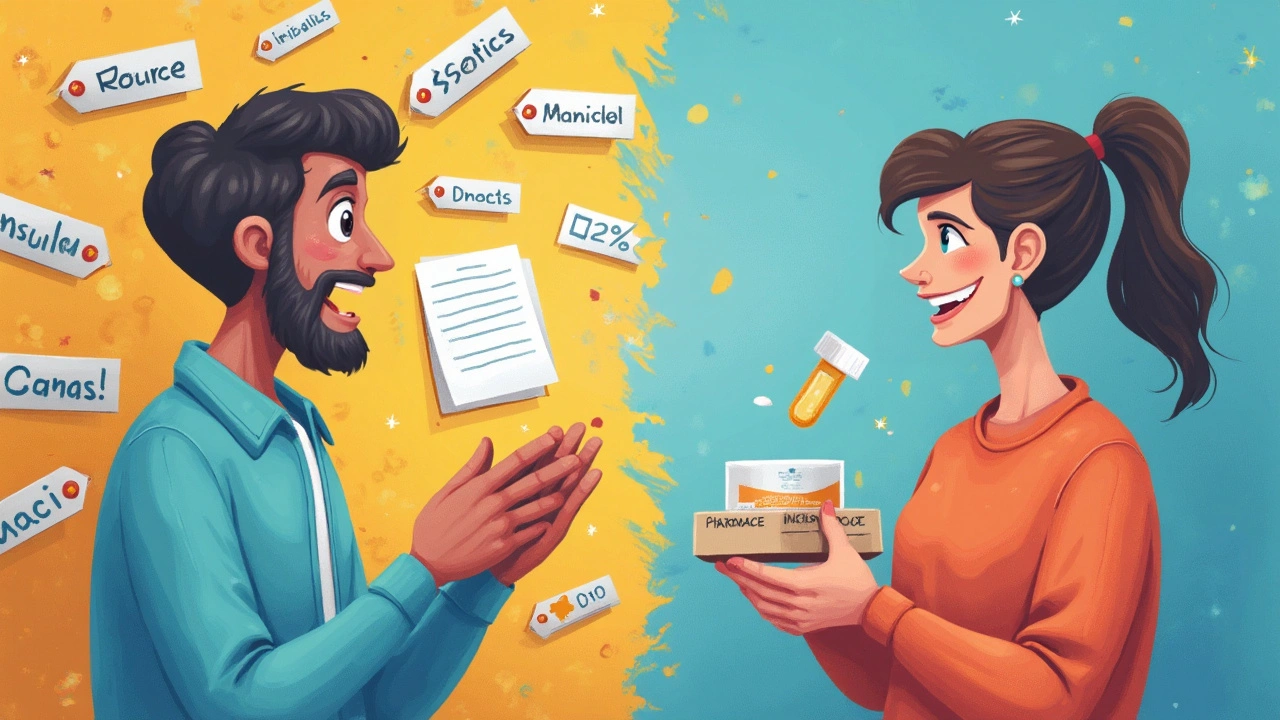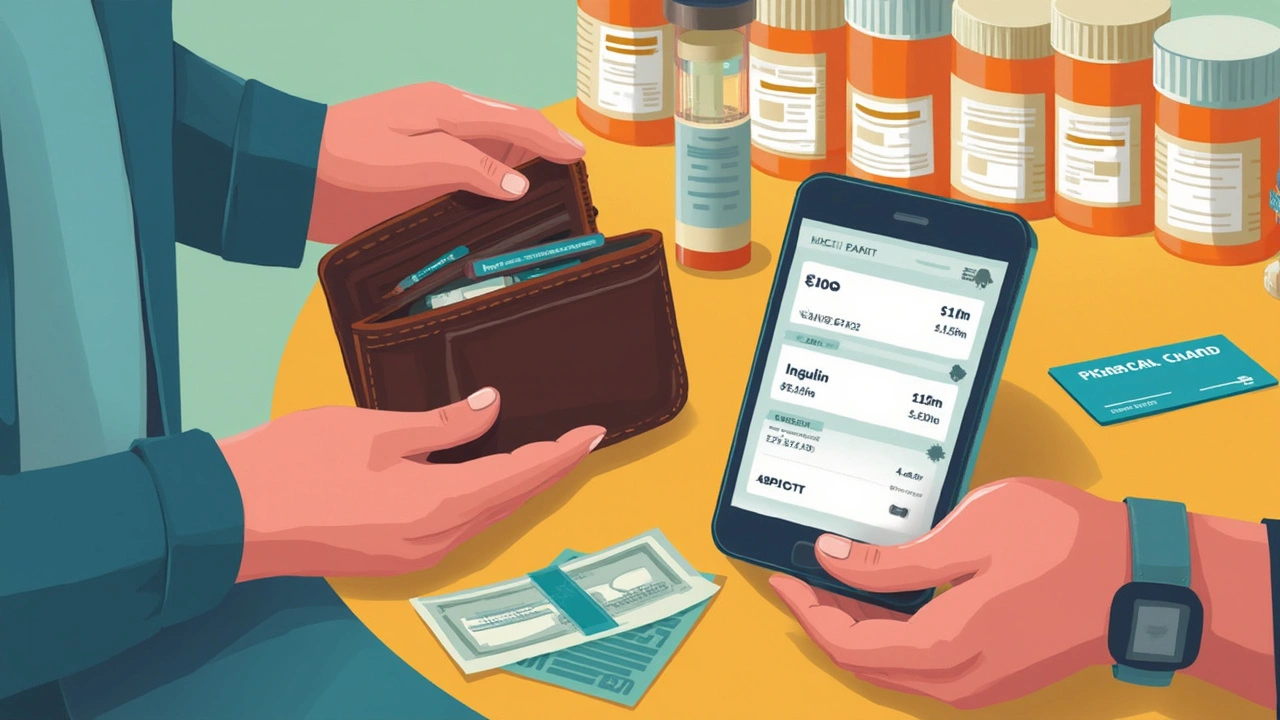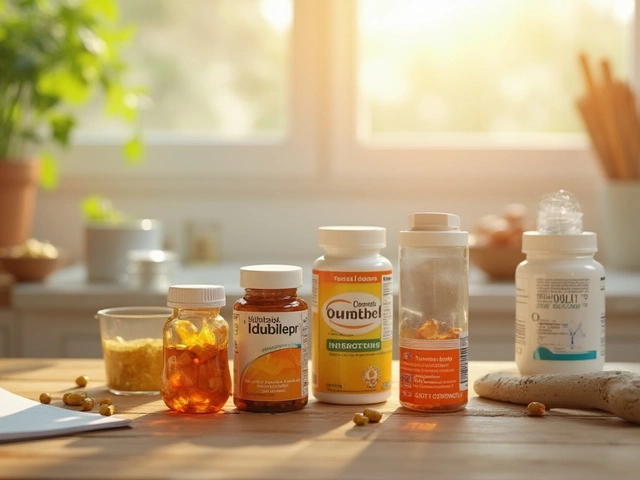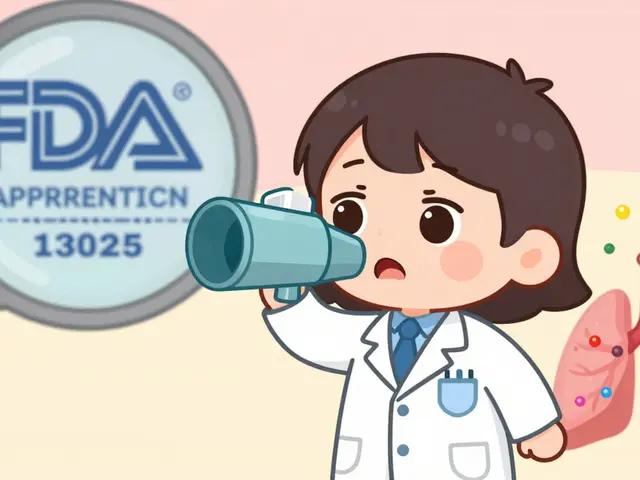Why Drug Prices in the U.S. Defy Logic
Ever wondered why a little vial of insulin—or an asthma inhaler—costs less than a new pair of sneakers in London, but could eat up your paycheck in Amarillo? In the U.S., insurance savings on prescription meds often seem like a shell game. The same goes for biologic medication—those life-changing drugs for conditions like rheumatoid arthritis or Crohn’s disease. Americans don’t just pay more than other countries; they sometimes pay ten times more for identical products.
This lunacy comes from a stew of patents, pharmacy benefit managers (PBMs), and the mad dance between drug companies and insurers. Insulin, for example, has been around for a hundred years, yet competition in the U.S. has done almost nothing to lower prices. With high-deductible plans, patients sometimes pay out-of-pocket list prices, which are insane. Meanwhile, if you pop over to Canada or order from a legitimate international pharmacy, the difference is more than small change—it’s life-changing.
Take this: A single month’s supply of Lantus (insulin glargine) can ring up over $300 at a typical pharmacy without decent coverage. The same exact thing in Canada? You’re looking at $40 to $60. Why? Other countries directly negotiate with drug companies. In the U.S., PBMs negotiate secret rebates, insurers play favorites with formularies, and patients are often left wondering if their prescription card’s even worth the plastic.
There’s a fun fact: In 2024, around 1 in 4 Americans with diabetes said they rationed insulin because costs were just too high. For inhalers, some brands now top $400 out-of-pocket per inhaler, even though they’re $60 or less overseas. Not to mention biologics—Humira, one of the best-selling drugs in the world, was over $5,000 a month in the U.S. last year. While biosimilars are appearing, insurers don’t always pass the savings along.
Insurance sometimes feels like a casino. You pay your premiums, but the payout on meds depends on what tier your drug falls into, your deductible, and unpredictable changes to preferred lists. Sometimes, the “discounted” price you get after insurance is barely lower than the sticker price. International pharmacies, on the other hand, work around the system entirely—serving customers from the U.S. despite the complicated FDA rules.
Case Studies: Insulin, Inhalers, and Biologics in the Real World
Let’s get specific. Three common (and crucial) prescription categories—insulin, inhalers, and biologics—show just how wild these price swings can be depending on where you buy. I’ll dig into typical insurance setups—like high-deductible insurance, Medicare Part D, and gold-plated employer plans—versus what a customer pays at an international pharmacy.
Case 1: Insulin (Lantus, Humalog, Novolog)
Beth, a type 1 diabetic in Illinois, has a high-deductible plan. She’s responsible for everything out-of-pocket until she hits a $4,000 threshold. Each month, her Lantus costs $340 at major U.S. pharmacies after her plan’s “negotiated price.” If she orders the exact product from a reputable Canadian pharmacy, her cost drops to $68 per month—including shipping. In a single year, that adds up to a potential $3,264 saved.
Case 2: Asthma Inhalers (Advair, Symbicort, Flovent)
Carlos has severe asthma. His employer’s insurance doesn’t cover brand-name Advair until after a $2,000 deductible. Local pharmacy price: $410 per inhaler. Carlos finds a vetted international pharmacy: $85 per inhaler, same product, manufacturer-sealed. Even after Customs and a prescription check, his wait time averages 10 days. He saves over $3,900 a year buying two inhalers per month abroad, compared to wrestling with his insurance’s "preferred" generic (which didn’t control his symptoms as well as Advair).
Case 3: Biologic Meds (Humira, Enbrel, Stelara)
For people with Crohn's, arthritis, or psoriasis, biologics aren’t just expensive—they can be bank-breaking. Elaine's Humira was $6,200 a month in the U.S. prior to hitting her catastrophic coverage cap (yes, that’s a thing on Medicare plans). Her trusted Canadian pharmacy? $2,400/month. Not chump change, but a life raft compared to local pricing. The numbers show insurance can be a help if you hit out-of-pocket caps or your drug is on a low tier—but for many, the real savings are offshore.
Here's a quick breakdown of what you might pay for a month's supply of common meds:
| Medication | U.S. Pharmacy (w/o Insurance) | With Insurance | International Pharmacy |
|---|---|---|---|
| Lantus Insulin | $340 | $140-$300 | $60-$70 |
| Advair Inhaler | $410 | $100-$350 | $85 |
| Humira | $6,200 | $3,200-$4,800 | $2,400 |
The savings stay pretty stunning, especially if you’re footing the bill before your deductible resets. For those on fixed incomes (hello, Seniors on Medicare), these cost gaps become dealbreakers.

Insurance: Where Are the Savings, Really?
Insurance companies love to boast about “negotiated prices.” What that looks like in the checkout line isn’t always thrilling. If your deductible is high, or your specialty drug falls on a nasty tier, your out-of-pocket costs can rival—sometimes even surpass—buying the drug outright from overseas pharmacies.
Let’s say your insurance plan covers Humalog insulin, but you haven’t met your deductible. The pharmacy rings up the “discount price” (still $250+ per month). Once you hit your deductible, you might only owe a co-pay—maybe $40—but only for the rest of the year. And next year? The meter resets and the chaos restarts. For inhalers, plans may require you to try and “fail” several cheaper options before they’ll cover the one you actually need. Not a great experiment when you’re struggling to breathe.
With Medicare, the infamous “donut hole” can leave you paying ridiculous amounts until you cross the coverage gap, while employer health plans can have runaway specialty drug costs unless you have top-tier coverage. Biologic medications, often needed for life, bring the pain with monthly co-insurance that feels endless. Did you know that in 2024, more than 70% of Americans with employer-sponsored plans said drug costs were their top financial health worry?
Rebates sound juicy on paper, but you rarely see those savings hit your wallet. Instead, the money goes to PBMs or insurance companies to offset premiums or, sometimes, their bottom lines. Drug companies argue high list prices are softened by rebates. Patients, meanwhile, just want to get through the month without wondering if skipping a dose will mean another ER trip.
Insurance is a safety net for catastrophic health events, but for daily medications—especially chronic conditions—the “savings” with insurance pale compared to international pharmacy prices. Especially if you’re paying retail while marching toward your deductible.
The International Pharmacy Playbook: How People Really Do It
Plenty of Americans secretly order their meds internationally—not just those who live near the Canadian border. While you can’t legally import some drugs in bulk (the FDA mostly frowns on this), they tend to ignore small shipments for personal use if you have a prescription and order within strict limits. The fear that Customs will seize your package exists—but for most, it’s not the reality, as long as you choose a pharmacy that’s licensed, transparent, and checks your prescription.
So how do you spot a real deal from a scam? Legit international pharmacies ask for a doctor's prescription, have on-call pharmacists, and don’t sell controlled substances like opioids. Look for those certified by groups like CIPA (Canadian International Pharmacy Association) or PharmacyChecker. Avoid any sites promising "no prescription needed" or AHUGE discounts too good to be true. And if a site won’t show you its address in Canada, the UK, or another country with strict pharmacy laws, run the other way!
One question people always ask: What about temperature-sensitive drugs like insulin or biologics? Reputable international pharmacies use insulated packaging, ice packs, and expedited shipping to keep meds safe. In reviews from real buyers, delays are rare, and drugs arrive in good condition. Still, heatwaves or border delays can sometimes mean a missed dose, so plan ahead and never let your supply get too low.
Here’s the secret sauce: By using comparison tools and certified pharmacies, Americans save from a few hundred to thousands annually—even after shipping and, occasionally, customs fees. You don’t have to fly to Vancouver; you just need to be smart about where you buy. There are handy resources to compare drug prices online before you commit.
And let’s talk about payment: Most international pharmacies require credit card payments, and some accept PayPal for added protection. Insurers sometimes refuse to reimburse for international purchases, but Health Savings Account (HSA) funds can sometimes be used—check your provider’s fine print.

Making Your Money Go Further: Tips for Stretching Prescription Dollars
Treat your health like a strategic game—because drug pricing is one. Here are practical ways to save big on prescriptions, both with insurance and international options:
- Always check the cash price—even if you have insurance. Sometimes it’s lower than your “negotiated rate.”
- Request a larger supply. Ninety-day prescriptions often cost less per month, both at U.S. and international pharmacies.
- Use online tools to comparison shop. Some let you enter your exact prescription and compare insurance copays with cash and international prices, helping you spot mismatches quickly.
- If your doctor is open to it, ask about generic or biosimilar options. International pharmacies may offer brands not yet available in the U.S.
- Don’t stick to big-box pharmacies. Local independents and regional pharmacy chains sometimes negotiate better discounts than insurance, especially on generics.
- For insulin users, newer patient assistance cards or manufacturer coupons can temporarily shrink your U.S. costs—but eligibility rules can be strict and may exclude Medicare patients.
- Be careful with international orders—don’t wait until day 2 of your last pill or shot to order. Plan for shipping delays, prescription verification, or rare customs hiccups.
- Check if your medication requires refrigeration or special handling. Reputable international pharmacies will explain exactly how the meds are packed and shipped.
- If you have a flexible spending account (FSA) or HSA, ask your provider if it covers overseas pharmacy purchases. Some people have had success, but get everything in writing.
- If a new drug comes on the market, prices can fluctuate wildly. Keep up with FDA news, because U.S. prices sometimes drop fast after new generics or biosimilars appear.
And don’t fall for shady shortcut sites. Read reviews, check credentials, and avoid any pharmacy that won’t show proof of licensing. One helpful test: Give their customer service a call. Reputable international pharmacies want you to talk to a pharmacist, not just chatbots.
When you stack all the numbers side-by-side, choosing between insurance and international pharmacies isn’t just about price. It’s about time, health, and peace of mind. And sometimes, a little research is all it takes to keep your medicine cabinet (and your budget) happy.







Jami Johnson
April 30, 2025 AT 01:33As a pharmacist who’s helped hundreds of patients navigate this mess, I’ll cut through the noise: international pharmacies aren’t ‘cheating’-they’re exploiting a broken system. My cousin in Texas saved $4k yearly on his Humira via a CIPA-certified Canadian pharmacy. The key? Always verify the pharmacy’s license, use a doctor’s prescription, and order 90-day supplies to avoid customs delays. Insurance’s ‘savings’ are a mirage when you’re paying $6k/month before hitting your deductible. Trust me, I’ve seen patients skip doses because of this. You don’t need to be a genius to save-just know where to look.
Kasey Krug
May 1, 2025 AT 01:33The author’s math is flawed; Lantus costs $340 without insurance in the US? That’s a 2023 figure. Current retail is $299. Also, Medicare Part D’s donut hole isn’t ‘infamous’-it’s a well-documented policy. The international pharmacy angle is valid, but the author ignores that FDA regulations exist for a reason. Patients should consult their physicians before bypassing the system. This isn’t ‘savings’-it’s circumventing safety protocols.
jake cole
May 2, 2025 AT 01:33This is why the US healthcare system is a scam.
Natalie Goldswain
May 3, 2025 AT 01:33lol, just ordered my inhaler from Canada. $85 vs $410. my insurance made me try 3 generics first. not fun. saved $3k last year. just make sure they’re legit. no prescription needed sites are trash.
khajohnsak Mankit
May 4, 2025 AT 01:33Imagine a world where medicine isn’t a luxury but a birthright. The price gouging on insulin isn’t just unethical-it’s a slow-motion crime against humanity. I’ve watched my aunt ration doses like they’re gold. It’s not about ‘savings’; it’s about dignity. The fact that Canada negotiates prices while we pay tenfold? That’s not capitalism-it’s a moral failure. We’re not just fighting for cheaper pills; we’re fighting for the right to breathe, to live, without fear of financial ruin. This isn’t a debate; it’s a crisis.
Jayant Paliwal
May 5, 2025 AT 01:33The author’s case study on Lantus is misleading because they omitted the fact that US pharmacies often charge list prices before insurance even kicks in; however, the international pharmacy comparison is valid, but the author failed to mention that shipping costs and customs delays can negate savings for some patients; additionally, the CDC reports that 1 in 4 diabetics ration insulin, which is a statistic that should be contextualized with regional income disparities; moreover, the FDA’s stance on importing medications is clear: it’s permitted for personal use under strict conditions, but the author didn’t elaborate on how often these imports are flagged by customs; also, the table comparing prices ignores that some US insurance plans have tiered co-pays that could make the ‘insurance’ price lower than the international option for certain drugs; finally, the author’s call to action about using HSA funds is incomplete without noting that not all HSAs cover international pharmacies, which creates a loophole for those without high-deductible plans.
Kamal ALGhafri
May 6, 2025 AT 01:33As a moral citizen, I find it appalling that Americans accept this systemic exploitation. Drug companies and insurers prioritize profit over human life, and the government’s inaction is complicit. You don’t need to be a doctor to see that this is a scandal. The fact that people are rationing insulin is a national disgrace. It’s time to demand transparency and fair pricing-no more excuses.
Gulam Ahmed Khan
September 16, 2025 AT 01:33You’re not alone in this fight! 😊 I saved $3,200 on my biologics last year using a legit Canadian pharmacy. Just do your homework-check for CIPA certification, ask for the pharmacist’s contact info, and order early. Your health is worth it. You got this! 💪